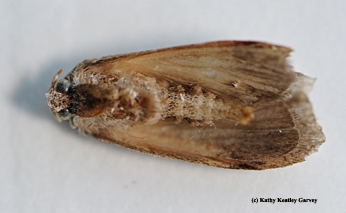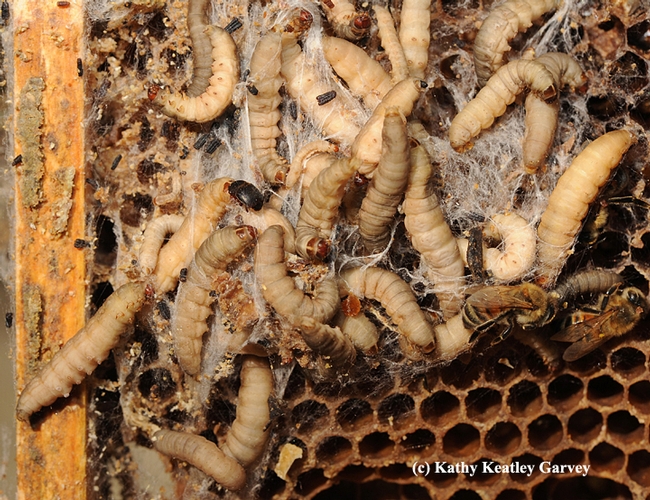
The event, which runs through Sunday, celebrates "the beauty, life cycles, and habitats of moths," according to its website. Scientists and citizen scientists are encouraged to document their findings. It's now a worldwide event.
A few nuggets from the website:
"Moths are among the most diverse and successful organisms on earth.
- Scientists estimate there are 150,000 to more than 500,000 moth species.
- Their colors and patterns are either dazzling or so cryptic that they define camouflage. Shapes and sizes span the gamut from as small as a pinhead to as large as an adult's hand.
- Most moths are nocturnal, and need to be sought at night to be seen – others fly like butterflies during the day.
- Finding moths can be as simple as leaving a porch light on and checking it after dark. Serious moth aficionados use special lights and baits to attract them."
Then there are, of course, the pests such as the greater wax moth, Galleria mellonella. This moth slips in at night to honey bee colonies and lays its eggs. The bees struggle to remove the larvae. Beekeepers struggle with control of the tell-tale evidence--damaged combs.
The honey bee bible, The Hive and the Honey Bee (Dadant Publication), says the wax moth female "produces less than 300 eggs during her life span of 3 to 30 days, but a few lay as many as 2000 eggs. Mated females fly to beehives one to three hours after dark, enter, and lay eggs until they leave shortly before daylight."
Sneaky little critters!
The Hive and the Honey Bee authors relate that "the presence of the wax moth larvae usually signals a major problem such as queenlessness, an infectious disease, poisoning and starvation."
Greater wax moths are probably not what the organizers of National Moth Week, founded by two naturalists in East Brunswick, N.J., had in mind when they launched this special week! (Unless, of course, they were anglers; the larvae make good fish bait!)
Attached Images:

